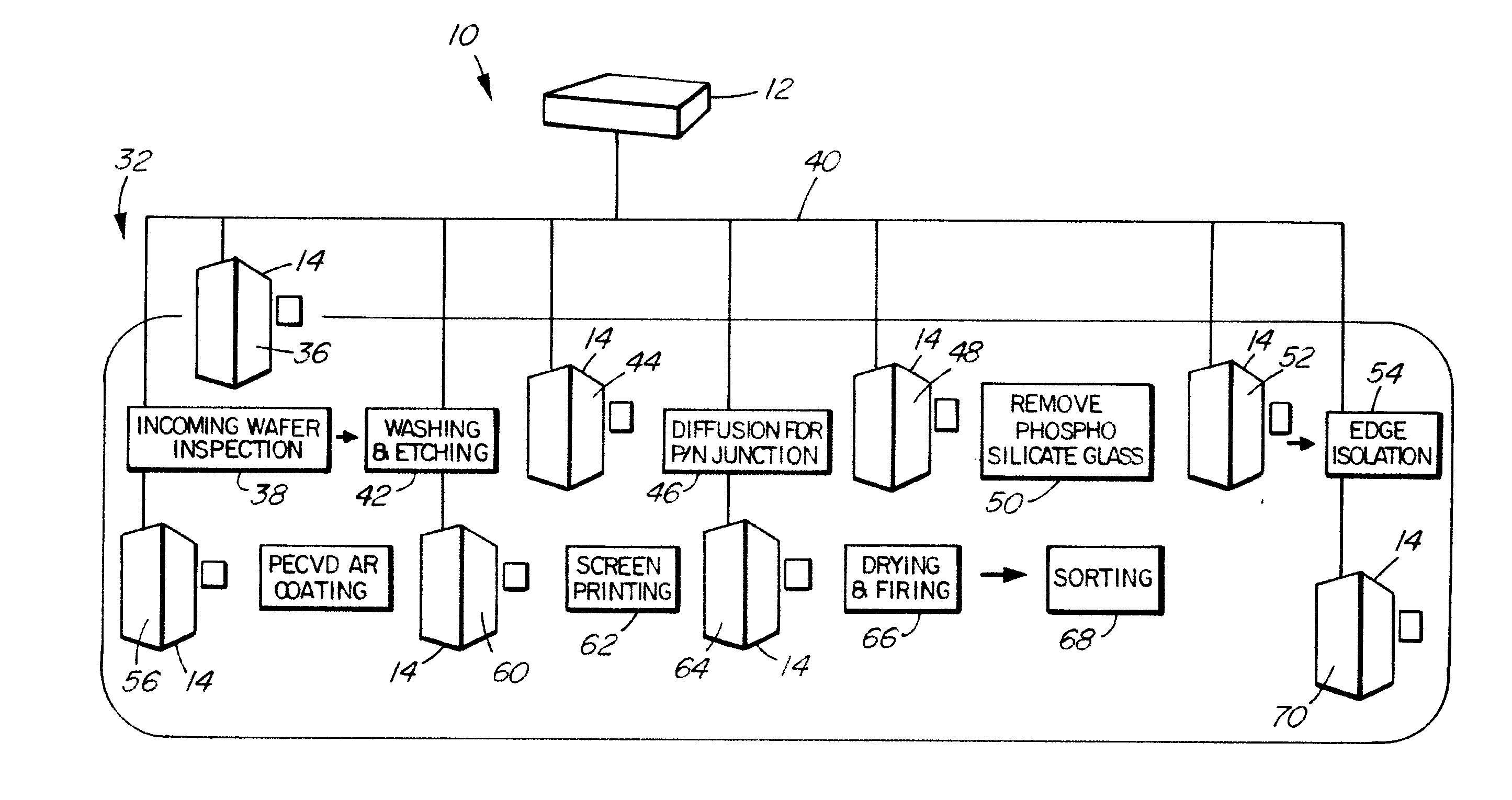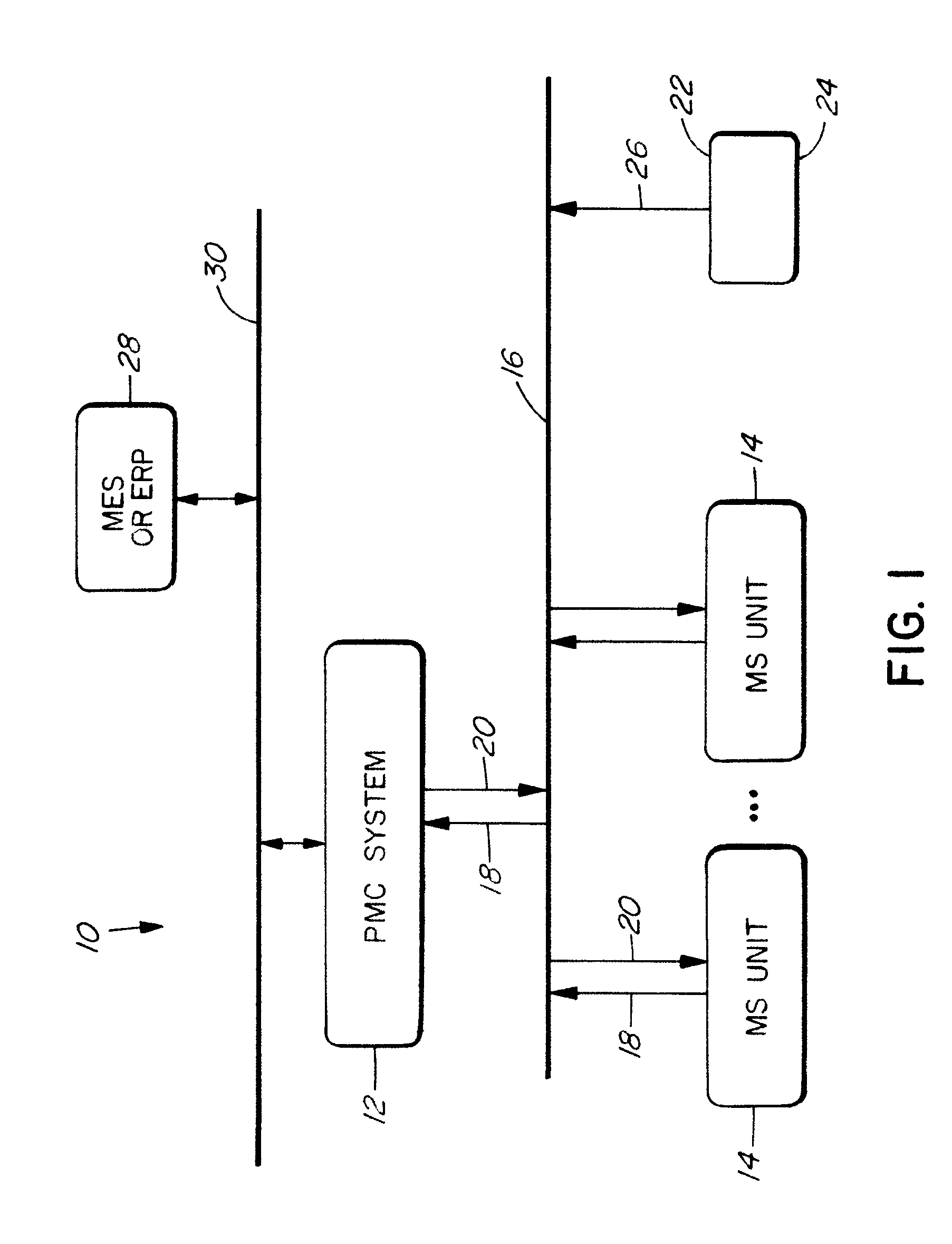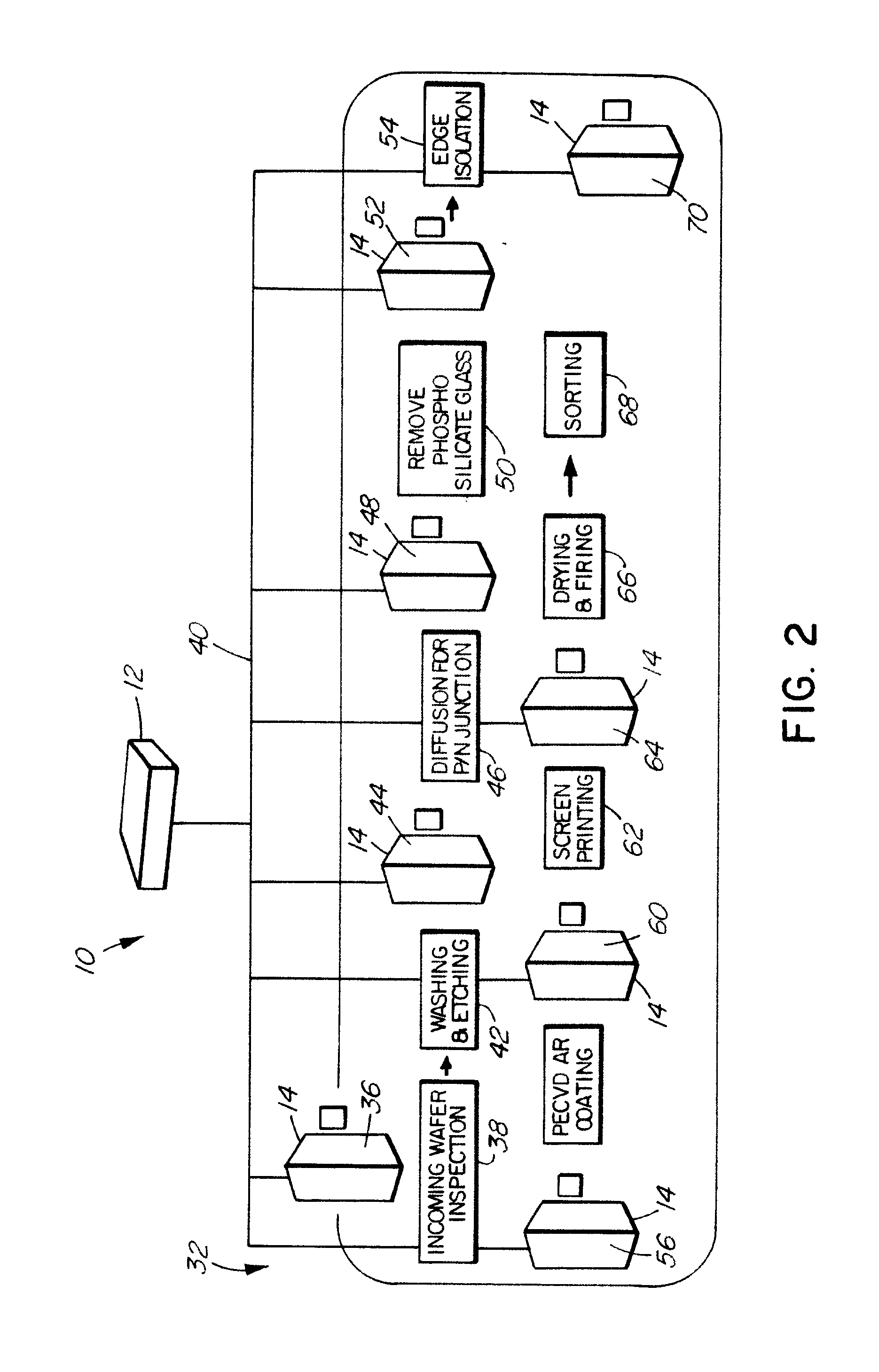Process for improving the production of photovoltaic products
a photovoltaic and product technology, applied in the field of photovoltaic products, can solve the problems of reducing limiting the use of pv power relatively, and limiting the use of pv power, so as to reduce the cost of pv materials, minimize production costs, and recognize production problems quickly and easily take corrective action.
- Summary
- Abstract
- Description
- Claims
- Application Information
AI Technical Summary
Benefits of technology
Problems solved by technology
Method used
Image
Examples
Embodiment Construction
1. Product Line Overview
[0110]In a preferred embodiment the present invention provides a Production Enhancing System (“PES System”) that optimizes the output of a PV factory by continuously evaluating the quality of WIP units through the manufacturing process and managing WIP unit mix and flow to generate improvements to economic value of the finished product relative to the cost of raw materials.
[0111]The PES System consists of two inter-linked products: a process measurement and control system (“PMC System”), and a set of inter-tool measurement and sorting units (“MS Units”). The MS Unit has two variants—a measurement-only version (the “Measurement MS Unit”), and a combined measurement and handling version (the “Measurement / Handling MS Unit”). The MS Unit of the preferred embodiment is designed for use in c-Si PV wafer or cell factories as an example. The PES System is shown generally in FIG. 1.
[0112]The PES System 10 comprises a PMC System 12 connected through a ProfiNET / Ethernet...
PUM
 Login to View More
Login to View More Abstract
Description
Claims
Application Information
 Login to View More
Login to View More - R&D
- Intellectual Property
- Life Sciences
- Materials
- Tech Scout
- Unparalleled Data Quality
- Higher Quality Content
- 60% Fewer Hallucinations
Browse by: Latest US Patents, China's latest patents, Technical Efficacy Thesaurus, Application Domain, Technology Topic, Popular Technical Reports.
© 2025 PatSnap. All rights reserved.Legal|Privacy policy|Modern Slavery Act Transparency Statement|Sitemap|About US| Contact US: help@patsnap.com



